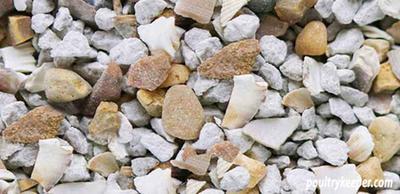

 4
4






- Tim's Homestead Journal - Purchase a copy of Building a Better World in Your Backyard - Purchase 6 Decks of Permaculture Cards -
- Purchase 12x Decks of Permaculture Cards - Purchase a copy of the SKIP Book - Purchase 12x copies of Building a Better World in your Backyard
 5
5




 3
3




Invasive plants are Earth's way of insisting we notice her medicines. Stephen Herrod Buhner
Everyone learns what works by learning what doesn't work. Stephen Herrod Buhner
 6
6




 8
8




"When the whole world is running towards a cliff, he who is running in the opposite direction appears to have lost his mind." C.S. Lewis
Visit https://themaineingredient.com for organic, premium dried culinary herbs that are grown, processed, and packaged in the USA.
 5
5




Best luck: satisfaction
Greatest curse, greed
 6
6




 4
4




$10.00 is a donation. $1,000 is an investment, $1,000,000 is a purchase.
 4
4




 5
5




"The genius of American farm experts is very well demonstrated here: they can take a solution and divide it neatly into two problems." -Wendell Berry
 3
3




"The only thing...more expensive than education is ignorance."~Ben Franklin. "We can easily forgive a child who is afraid of the dark; the real tragedy of life is when men are afraid of the light." ~ Plato

 4
4




Hans Albert Quistorff, LMT projects on permies Hans Massage Qberry Farm magnet therapy gmail hquistorff
 3
3




"The only thing...more expensive than education is ignorance."~Ben Franklin. "We can easily forgive a child who is afraid of the dark; the real tragedy of life is when men are afraid of the light." ~ Plato
 4
4




"When the whole world is running towards a cliff, he who is running in the opposite direction appears to have lost his mind." C.S. Lewis
Visit https://themaineingredient.com for organic, premium dried culinary herbs that are grown, processed, and packaged in the USA.
 4
4




Best luck: satisfaction
Greatest curse, greed
 7
7




Argue for your limitations and they are yours forever.












 3
3




- Tim's Homestead Journal - Purchase a copy of Building a Better World in Your Backyard - Purchase 6 Decks of Permaculture Cards -
- Purchase 12x Decks of Permaculture Cards - Purchase a copy of the SKIP Book - Purchase 12x copies of Building a Better World in your Backyard
 4
4




Timothy Norton wrote:I've recently read that a chicken might consume a 1/3 lb of grit per month. I think that is kind of incredible!
"When the whole world is running towards a cliff, he who is running in the opposite direction appears to have lost his mind." C.S. Lewis
Visit https://themaineingredient.com for organic, premium dried culinary herbs that are grown, processed, and packaged in the USA.
 3
3




Matt McSpadden wrote:
Timothy Norton wrote:I've recently read that a chicken might consume a 1/3 lb of grit per month. I think that is kind of incredible!
That is pretty impressive. I imagine it matters what kind of grit. If it was something like oyster/egg shells that dissolve fairly easily, I imagine they would go through more than an actual pebble that would probably stay for longer.
"The only thing...more expensive than education is ignorance."~Ben Franklin. "We can easily forgive a child who is afraid of the dark; the real tragedy of life is when men are afraid of the light." ~ Plato
 4
4




Life's too short, eat desert first! [Source of quote unknown]
You have to be warped to weave [ditto!]
 2
2




 4
4




I would like to also point out that while calcium sources like oyster shells can be used as a form of grit... it is water soluble and will not last long compared to say pebbles and granite shards.
 4
4




Jake Esselstyn wrote:
Matt McSpadden wrote: I would like to also point out that while calcium sources like oyster shells can be used as a form of grit... it is water soluble and will not last long compared to say pebbles and granite shards.
I'm having a hard time understanding how this could be true. Oysters live in water. Why don't they dissolve?
"When the whole world is running towards a cliff, he who is running in the opposite direction appears to have lost his mind." C.S. Lewis
Visit https://themaineingredient.com for organic, premium dried culinary herbs that are grown, processed, and packaged in the USA.
 3
3




 2
2




Best luck: satisfaction
Greatest curse, greed

|
Gimmie! Gimmie dammit! Gimmie that tiny ad!
Established homestead property 4 sale east of Austin TX
https://permies.com/t/259023/Established-homestead-property-sale-east
|



